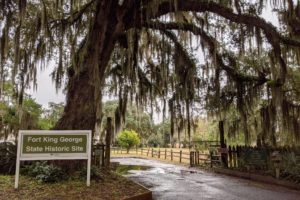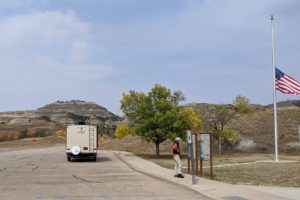If you’ve read the Bible, especially the Gospels that tell us about Jesus when He was here on earth, you probably think you know a lot about the world in which Jesus lived. I did. Then we started watching the series The Chosen and saw Israel, especially the northern part of the country, through the eyes of those writers. (Yes, it was filmed in west Texas and Utah, not Israel.) This was my attitude as we entered this exhibition. Oh my, did I learn more than I expected.
If you get a chance to see this traveling exhibition, please do so. You’ll get so much more out of it than I can include in this post.


These rare archaeological findings bring to life the stories in the New Testament and give us an historical and visual context to faith brought to us from Oded Golan. Who is he? As a descendant of a European Zionist pioneer family who immigrated to Israel (then Palestine) in the early 20th century, his relatives were instrumental in founding the fledgling State of Israel.
Oded’s interest in archeology started when he was only 9. On a family visit to Tel Hatzor (the site of a major Canaanite city) in northern Israel, he found his first historic gem. Since the age of 16 he has traveled throughout the Land of Israel searching out the ancient biblical kingdoms and making connections with locals and licensed antiquities dealers.

His various successful businesses provided the means to pursue his passion for archaeology. Many of the artifacts were found during construction activities next to the sites of ancient biblical settlements.
the 1st century world

ossuraries (bone boxes)

So why were these boxes used? We know that the body of Jesus was originally put in a cave outside of Jerusalem after He was killed on the cross. Here’s what I’ve come up with as to the use of these boxes for bones.
Remember the map that we just looked at? Israel was a very small country, so the idea of burying the dead in cemeteries would take up too much of the land. Also, much of the land was rocky, so it would have been hard to dig deep enough for graves. Today we can deal with bodies so they won’t smell, but the 1st century didn’t have that option. Instead, bodies were wrapped (like Jesus was) and then stored in caves such as what we see in the next picture.

After a few years in this arid country, only the bones would be left. The longest bone, the femur, placed diagonally in the box determined the size needed. The decoration (or lack of it) carved in the stone would show how wealthy and/or important the person was. We’ll see more of these “bone boxes” as we walk through the exhibit.
earliest known images of the Nativity
While the next picture is from the 3rd or 4th century, it was included early in the exhibit because the box had the earliest known images of the Nativity. These Holy Boxes (containers for relics, or a Reliquary) would store ashes, a bone fragment, or pieces of cloth of an unidentified saint. Why would these be important in the first centuries? Manuscripts were few, and most people couldn’t read, so teaching could be done by the pictures on the boxes and referencing the items inside.
The Nativity events shown on the box are as they are described in the Gospels of Matthew and Luke. Reliquaries have been discovered in several early Byzantine churches in Israel, either beneath the table of the altar or in a niche within an adjacent wall.

Front of the box right side: Joseph, Mary, and Baby Jesus in the manager in Bethlehem. The donkey and ax are peeking behind the manager.



Or this man and an angel may represent the angel announcing to Joachim, the husband of Anne, the expected birth of Mary, mother of Jesus (as described in the Gospel of James that isn’t in our Bibles).
the manager
Over the years we’ve had numerous descriptions of what the manager looked like where Jesus slept. More than likely the manager was in a cave that the shepherds knew about.

Many stone managers like the following one have been found in archaeological excavations. Fresh straw would have been the perfect bedding.

Jerusalem at this time
Jerusalem was a prosperous Jewish city, with a population of around 20,000 inhabitants. Most of the residents were employed at the Temple to support its activities, and most Jews made a pilgrimage to the Temple on the main holidays. It was the only temple where the Jews worshiped their one and only God.

The Temple was an important part of life for Jewish men and women in the 1st century. In the next picture, this highly decorated 1st century ossuary found in Jerusalem closely resembled the Temple built by King Herod the century before Jesus walked in Israel.


These doors were probably used by the priests in the Temple on ordinary days, while the large door was opened for the pilgrims to enter the Temple on holidays and large events. This ossuary would have been made before the Temple was destroyed by the Romans in 70 AD.
Rome’s influence on the Land of Israel
Jesus lived while the Roman Empire was in charge of Israel; Roman rule began when Pompey took over in 63 BC. In 37 BC, Augustus, the Roman Emperor, appointed Herod to govern this territory any way he wished, as long as he could maintain peace and stability.
After Herod died around 4 BC, his 3 sons divided the kingdom. Galilee, where Jesus’ family lived, was governed by his son Herod-Antipas. The area of Judea and Jerusalem in the south was ruled by another son, Archelous. In 6 AD, Archelous was removed by Augustus who turned Judea into an imperial province. A Roman prefect was sent to govern the area with a Roman legion of 3000 soldiers. If you’ve watched The Chosen, you’re familiar with the Roman prefect.

The day-to-day governing in Jerusalem was done by the High Priest Caiaphas, who held his office from 18 to 36 AD, and by the Sanhedrin tribunal (71 elders known later as “rabbis”). These men were the supreme authority on Jewish law for the Jewish population. They could make arrests and conduct legal trials.
The Roman prefect and his small army would be in Jerusalem to ensure peace during the pilgrimage festivals–Passover, Pentecost (Shavuot), and Tabernacles (Sukkoth)–when large Jewish crows would gather.
life in Galilee
Jesus grew up in the small village of Nazareth that was located in the northern part of Israel. Archaeological scholars estimate that the population when Jesus lived there was around 200-350 (some 40-60 families). Their life expectancy was under 30 years.

Galilee was relatively prosperous because the land and climate provided abundant harvests and land for grazing herds of sheep. The Herodian dynasty was known for organizing large-scale public projects employing thousands of men. Nazareth was located close to Sepphoris, a large city with mixed Roman and Jewish populations, that provided employment to the local villagers, especially carpenters, builders, and blacksmiths.



social classes
I’ve always thought the the Jewish population in the 1st century was made up of 2 classes: priests and poor people. This exhibit talked about a small middle class in the 1st century made up of such professional people as shopkeepers, tradesman, fishermen, and educated people. Since Jesus knew how to read and understand the Torah, as well as other books of the Jewish bible, his family of carpenters probably belonged to this class. When Jesus started His mission as an itinerant preacher, He would have found Himself at the bottom of the social ladder.
The small upper class included the very wealthy (the Herods), the High Priests, and the rich nobility who owned most of the land. Jesus certainly knew of this rich nobility since He made references to them in His parables.
Most of the people belonged to the peasant class. They were the tenant farmers and farm laborers that Jesus referred to in His parables.

Much of Jesus’ work and mission was directed to caring for and serving the poor and needy, and encouraging us to do the same.
We’ll look at how people lived later on.
Jewish purity rituals
When God gave the nation of Israel the rules by which they were to live, many of the rules had to do with being clean and pure on the outside so they would realize that they needed to be the same way on the inside. These purification rituals required a large number of stone vessels, especially cups and mugs, that were produced mostly in quarries in and around Jerusalem. Any pottery vessel that came into contact with impurities had to be broken. Stone, however, was considered a material that could not acquire or transmit impurities.

This practice disappeared suddenly after the destruction of the Temple in 70 AD, and most of the Jewish people still living would have quickly left the city.
ritual baths
As we’ve mentioned, in the 1st century AD, careful attention was paid to the laws of purity and impurity, and Jewish men and women would purify themselves in ritual baths. Vessels and items of clothing were also immersed in the ritual bath for purification.

If you’ve been watching the TV series The Chosen, you’ll see the importance of these ritual baths while Jesus and His disciples were in Capernaum.
spiritual life
In Jesus’ time, the books of the Bible (Torah, the Prophets, and the Psalms) were copied by professional scribes on parchment (processed animal skins). These scrolls were stored in special elongated terracotta containers (we’ll see one of these containers soon), such as the jugs found at Qumran on the shores of the Dead Sea where the Dead Sea Scrolls were discovered.
The main tools for writing were the stylus (made of reed, bone, or metal), and the inkwell. The ink was usually black, sometimes red.
Other works of literature, poetry, and religious books, known as the Jewish Apocrypha, were in circulation but most were not considered sacred manuscripts.

Synagogues
The spiritual center of the Jewish faith was the Temple in Jerusalem, which served all of the Jews in Israel and the surrounding areas until 70 AD. In the 1st century AD, only a few synagogues were also in Galilee. But where did the idea of synagogues come from?
What I’ve learned over the years was that when the southern 2 tribes (Judah and Benjamin) were taken to Babylon, the Jewish people were allowed to live together and worship as they wished. Since they didn’t have access to the Temple in Jerusalem and it had been destroyed, the Jewish leaders created a synagogue where the people could come together for teaching and fellowship. Sounds like what our churches are today. When the Jewish people were allowed to return to Jerusalem and rebuild the Temple, cities and villages that were further away started having synagogues so the Jewish men and women could gather and their children could be taught.
Archaeological excavations in northern Israel have uncovered only three 1st century synagogues to date: in Magdala and Capernaum (both on the shores of the Sea of Galilee), and Gamla in the Golan Heights. According to the Gospels, a synagogue did exist in Nazareth and served as a place of assembly for the town’s residents, who spoke mainly Aramaic. Many people were illiterate and came to the hear stories of the Bible in Hebrew, together with translations and interpretations of the Pentateuch and the words of the Prophets and to study the commandments.

It was only after the 4th century AD that people would build a synagogue in each Jewish town since the Temple had been destroyed in the 1st century.
Over the centuries when Jewish men and women lived in other countries, they would build synagogues so they could congregate, learn, and worship together.
Dead Sea Scrolls
These religious manuscripts were discovered between 1946 and 1956 in 11 caves near Qumran on the northern shore of the Dead Sea (part of the kingdom of Jordan at the time). The scrolls are dated from the 3rd century BC to the 1st century AD. Thousands of written fragments have been discovered in these caves. Seven scrolls were found in cave #1 almost complete. More than 15,000 fragments of scrolls were found in cave #4, and from them researchers have assembled a collection of more than 900 different manuscripts.
Most archaeologists have associated the scrolls with the ancient Jewish sect called the Essenes. Several scholars suggest that the scrolls came from the library of the Temple in Jerusalem after they were placed in jars in the caves by the Temple scribes or priests during the war between the Jews and the Romans in Jerusalem (before 70 AD) in order to protect them. Makes sense.

But these scrolls shed new light at the time and on the emergence of the Christianity and Rabbinical Judaism.

The two handles were used to hold the container, imitating the way in which the Bible and other holy parchment scrolls were held when read in the synagogue. The other items were used at the time by the religious leaders.
personal life for the more wealthy
Women usually had a set of mirrors, combs, hairpins, pots of cream, ointments, and perfumes. Mineral pigments were used for makeup and applied with spatulas. Women wore earrings (typically made of gold), necklaces, and rings, primarily on special occasions. (Again, we saw these personal items being used by the religious leaders and their wives in The Chosen.)

Mirrors of the period were made of polished bronze shaped into flat round discs. Mirrors were considered luxury items, and the most ornate were imported from Italy. They typically had a wooden handle that disintegrated over time and, therefore, couldn’t be preserved.

dining hall
Village families used to meet for the communal meals to share the food. I wonder if some of the women would do the cooking while other women would do other chores for the village families.
Only royal or high class families had a banquet hall in their house where relatives, friends, or occasional guests would be welcome. We saw such a larger room in Mary and Martha’s home in The Chosen.

Wooden wares rotted over time, so only a few items have been discovered in excavation sites in a very dry desert climate. Luxury table items used by the more wealthy were made of bronze (small dishes), stone (mainly cups), bone, and glass.
Israel was known for its outstanding glassware, which included bottles and plates. Most tableware was made locally. Decorative pottery items were imported mainly from the Eastern Mediterranean Basin (Syria, Asia Minor, and Cyprus) for use by the wealthy families.

We had no idea that glass items were used during this time. Of course, they were only owned by the more wealthy people.
homes
The ground floor in the family home was used to house and shelter animals for their meat, eggs, milk, and other food products for the family’s consumption. This space was also used as a workshop for crafts such as weaving, spinning, carpentry, and the professional occupation of the head of the family. This was probably the situation in Jesus’ home in Nazareth, where carpentry work was performed on the ground floor of the home.



Front of the display is a door bolt; in the back is a stone game board.
Most families lived in a 2-story house with a yard. We’ve already described the first floor. The second floor was typically the sleeping area. The rooms had small windows. During the hot summer months, family members would also sleep on the roof.


During Jesus’ time, Jews made up most of the population in Israel, west of the Jordan River, and lived in Jewish cities and villages. Galilee (in the north) and Judea (in the south), the principal Jewish regions of Israel, were surrounded by non-Jewish populations (Gentiles). A number of larger cities had mixed populations of Jewish, Greek, and Roman.

The primary language of Jews in Galilee was Aramaic (a Semitic language), while the use of Hebrew was mainly limited to religious contexts, such as reading the Bible. Rome allowed the Jews throughout the Roman Empire to practice their own customs, even when they were at odds to Greco-Roman culture.


John the Baptist and his father, Zacharias
Luke tells us in his Gospel (chapter 1) about Zacharias, a priest in the Temple, and his wife Elizabeth, a relative of Jesus’ mother Mary. Their son, John, born late in their lives, was a prophet and preacher, warning the people that they should repent of their sins because the Messiah was coming.

For the sake of this exhibit, we’re concentrating on John’s father Zacharias. An ossuary that we’ll soon see was discovered in Jerusalem in to the 1st century AD and had the name of Zacharias in Greek. The amazing combination of this name, its specific spelling, and the intricate Jewish motifs suggest a link to the Temple and hint that the individual’s bones inside may have served as a priest.

The ossuary is decorated on all four sides, with several motifs. It was probably intended to stand in the center of the burial chamber, rather than next to the wall or inside a burial-niche, so all four sides could be seen. I would think that the position of this ossuary meant that the bones of the person inside belonged to a very special person.
Here’s what we can see on the end portion that’s in the previous picture. The spelling of the name Zacharias, the 2 tall columns in front of the Temple in Jerusalem, and the six-leaf rosette between the 2 columns; it’s a common Jewish motif of the time that speaks to faith and spiritual protection.

These drawings shows a structure with 4 openings, symbolizing the Temple, through which a wing-shaped entity appears to hover freely.


other places in Israel

According to early Christian tradition, a mountain named Jebel Quruntul that overlooks the town of Jericho in the Judean Desert is thought to be where Jesus was tempted by the devil during these 40 days.


Jesus in Jerusalem
Probably about 3/4 of the time Jesus was traveling with His disciples, He was in the northern part of Israel in Galilee around the northern part of the Sea of Galilee. The remainder of His time took Him to Jerusalem where the leaders of the Temple were wanting to arrest Him. The bulk of this time in Jerusalem was during the last week of His life, what we call Holy Week.



Such a cup could have been used by Jesus and His Apostles in the Last Supper on the eve of Passover. The cup eventually became known as the Holy Grail because of the miraculous healing powers ascribed to it.
another crucified man in Jerusalem
In 1968, an archaeologist excavated a tome in northern Jerusalem and found one of the bone boxes (ossuaries) in a cave that had bones of a young man who had been crucified. The heel bones had been pierced by an iron nail, and tiny fragments of wood from the cross were also identified.


ossuary of James, son of Joseph and brother of Jesus

Matthew 13:55 tells us about Jesus’ brothers James, Joseph, Simon and Judas (probably Jude who also wrote a letter in the New Testament). Mark 6:3 mentions these 4 brothers and sisters (plural).

Paul talks about him in Galatians 1:18-19 when Paul stayed with Peter for 15 days. Paul also describes James as being one of the persons to whom the risen Christ showed Himself (1 Corinthians 15:3-8). James was stoned to death at the order of the Sanhedrin in 63 AD.

Christianity after Jesus
Christianity began as a sect of Judaism that competed with other sects, such as the Pharisees, the Sadducees, the Zealots, and the Essenes (remember the Dead Sea Scrolls?). Jesus’ disciples and most of the writers of the New Testament letters were Jewish, so they became known as the Jewish followers of Jesus. The Romans viewed the Christians (early on and then later) as a sect of Judaism, and the prohibitions and laws that applied to the Jews in the Roman Empire also applied to the Christians.

Christianity was a persecuted religion until Constantine the Great affirmed the Roman Empire’s tolerance for Christianity in the 4th century AD. By the end of the 4th century AD, Christianity was declared as the official religion of the Empire, and the Land of Israel became known as “the Holy Land.”
This new status brought economic prosperity and growth to Israel where ambitious building projects were carried out by the Empire and churches were built in almost every town and village. Pilgrims flocked to the holy places, and many decided to stay.
The Jews continued to live mainly in eastern Galilee and Judea. Greek remained the common language, alongside Hebrew and Aramaic.

In the 7th century AD, the Muslims succeeded in conquering the entire Middle East, and the Islamic Period in the Holy Land began.
So how did we get to today?
In the 19th century, the Zionist movement was founded in response to antisemitism in Europe. Many Jews were desperate to leave Europe after the Holocaust, but immigration was restricted. Jews have been returning to Israel for thousands of years, and the modern State of Israel was established in 1948. This event is known as Aliyah, which means immigration to Israel. The Law of Return grants citizenship to Jewish returnees and their spouses. Information from a website of Jews returning to Israel.
As Jews returned to the land that had become barren, they worked hard to restore what is Israel today. If you’ve ever read books about what it was like when the Jews returned in the first half of the 1900s, you’ll appreciate all of their hard work.
If you’d like to learn more about what happens when Jesus returns at the end of the age, you may want to read through my notes about the scriptural references primarily from John’s writing in the book of Revelation based on the Left Behind Series. These notes, and other studies, in a PDF format are free to download on WalksWithTheFather.com.





1 Comment
Leave your reply.